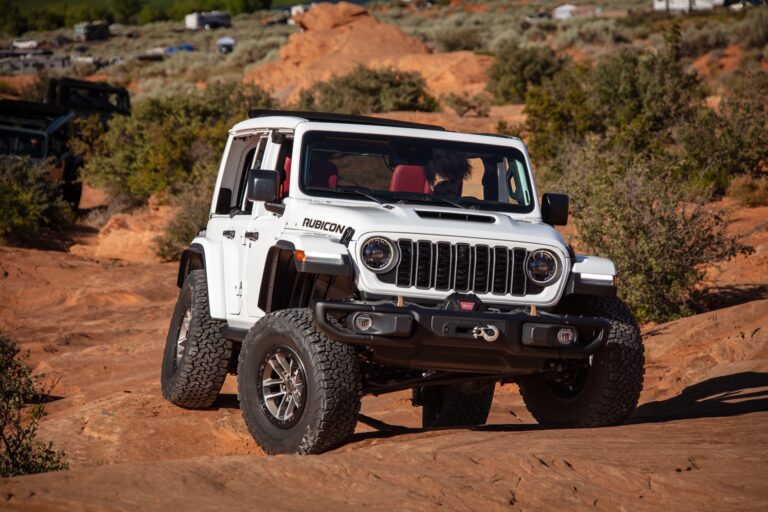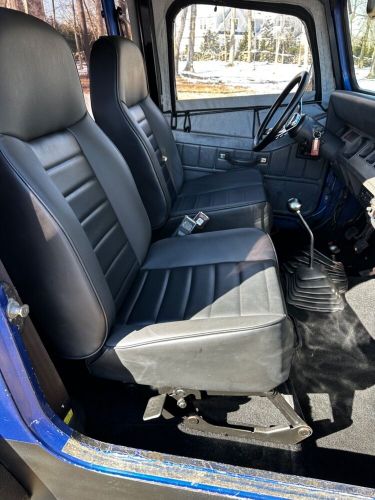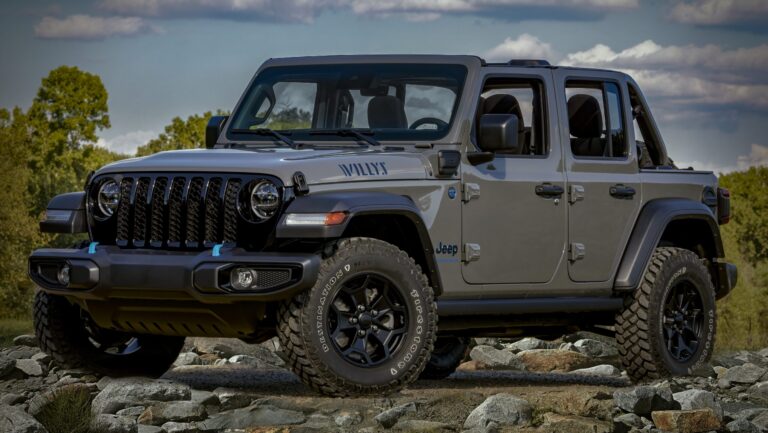1999 Jeep XJ For Sale: Your Definitive Guide to Buying a Legend
1999 Jeep XJ For Sale: Your Definitive Guide to Buying a Legend jeeps.truckstrend.com
Introduction: The Enduring Appeal of the 1999 Jeep XJ
In the vast landscape of automotive history, few vehicles achieve the cult status and enduring loyalty of the Jeep Cherokee XJ. And within that legendary lineage, the 1999 model year holds a particularly special place. Often considered the pinnacle of the XJ’s production run before significant changes in 2000 and its eventual discontinuation in 2001, the 1999 Jeep XJ represents the culmination of a robust, simple, and incredibly capable design. For enthusiasts and practical adventurers alike, the prospect of finding a 1999 Jeep XJ for sale isn’t just about buying a used car; it’s about acquiring a piece of off-road heritage, a versatile platform for customization, and a reliable companion for countless adventures. This comprehensive guide will navigate you through everything you need to know about purchasing this iconic vehicle, from understanding its unique appeal to conducting a thorough inspection and making an informed decision.
1999 Jeep XJ For Sale: Your Definitive Guide to Buying a Legend
Why the 1999 Jeep XJ? A Legend’s Swan Song
The 1999 model year is frequently cited as the "sweet spot" for Jeep Cherokee XJ enthusiasts. Why? It retained the classic, unmolested body style and mechanical simplicity that made the XJ famous, while benefiting from minor refinements and improvements implemented over the years. Crucially, it predates the infamous "0331" cylinder head casting issue that affected some 2000 and 2001 4.0L engines, making the 1999’s robust 4.0L inline-six engine (with its reliable "0630" or "7120" head) a significant draw.
The XJ is celebrated for its unibody construction, which, combined with solid axles and a powerful inline-six engine, created a lightweight yet incredibly strong and agile off-road machine. Its compact dimensions make it highly maneuverable on tight trails, while its ample cargo space and comfortable interior (for its era) allowed it to double as a practical daily driver. For those seeking a vehicle that blends classic utility with modern customizability, the 1999 Jeep XJ stands out as a true automotive icon.
Key Features and Specifications of the 1999 XJ
Understanding the core components of the 1999 Jeep XJ is essential for any potential buyer.
- Engine: The heart of the XJ is the venerable 4.0L (242 cubic inch) AMC I6 engine. This inline-six is renowned for its low-end torque, durability, and relative simplicity, making it highly favored for off-road use and easy maintenance. In 1999, it produced approximately 190 horsepower and 225 lb-ft of torque.
- Transmissions:
- AW4 Automatic: The most common transmission, a four-speed automatic manufactured by Aisin-Warner. It’s known for its incredible durability and reliability, often outliving the rest of the vehicle if properly maintained.
- AX-15 Manual: A five-speed manual transmission, also by Aisin-Warner, found in fewer models. While providing a more engaging driving experience, these are rarer and can command a higher price.
- Transfer Cases:
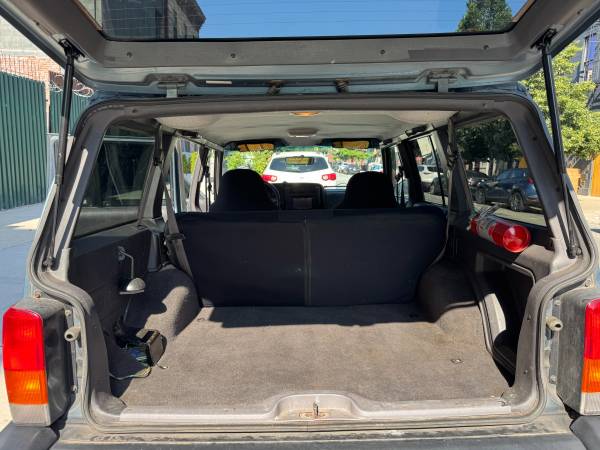
- NP231 Command-Trac: A part-time 4WD system, meaning it should only be used on loose or slippery surfaces (snow, dirt, mud) to avoid drivetrain binding. It offers 2WD High, 4WD High, Neutral, and 4WD Low.
- NP242 Selec-Trac: A full-time 4WD system, which allows for "full-time" 4WD on pavement as well as part-time options. It offers 2WD High, 4WD Full-Time, 4WD Part-Time, Neutral, and 4WD Low. The NP242 is generally preferred for its versatility.
- Axles:
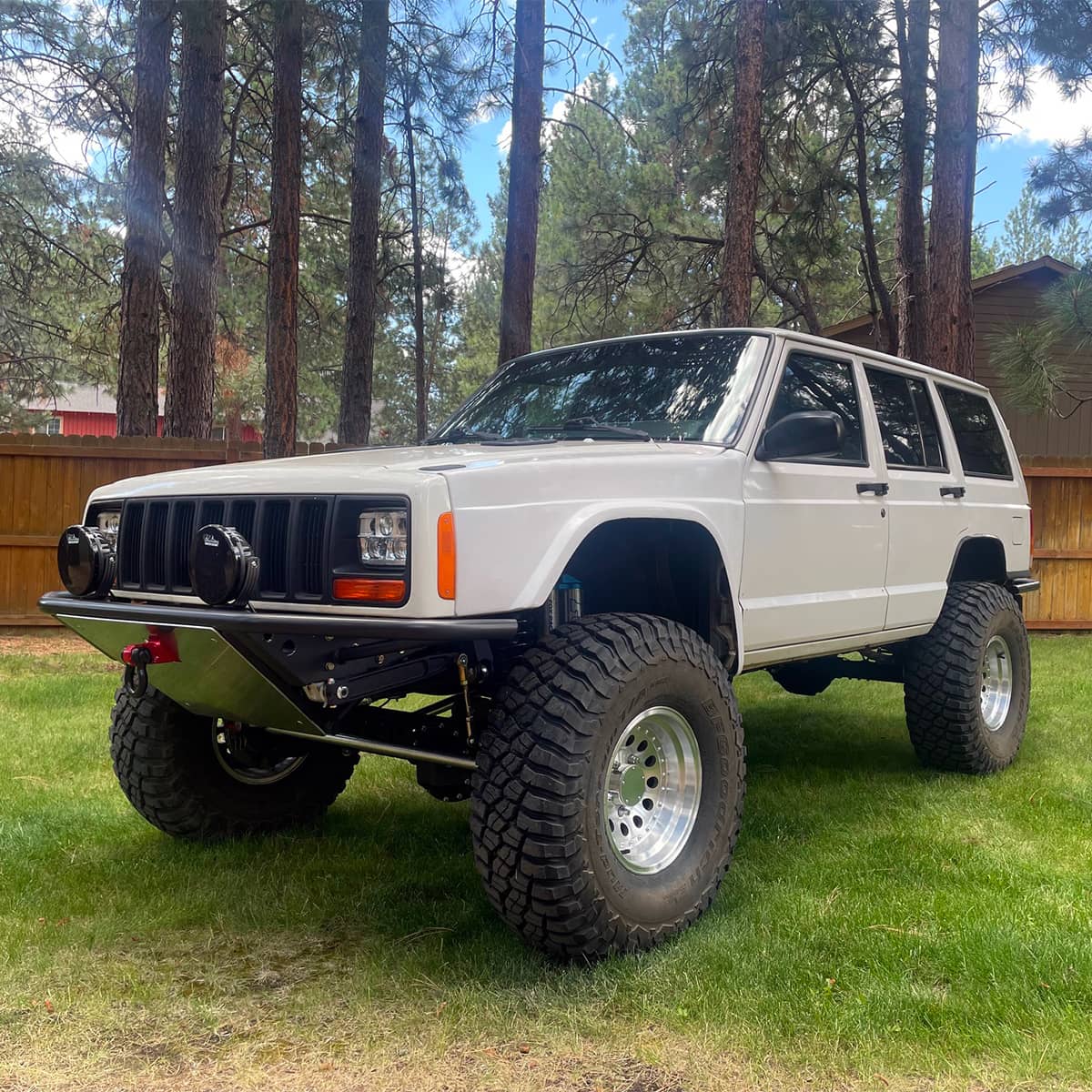
- Front: Dana 30 (reverse cut).
- Rear: Most 1999 XJs came with the Chrysler 8.25-inch axle, which is considered significantly stronger and more desirable than the weaker Dana 35 found in earlier or base models. Some rare variants might have a Dana 44, but this is highly uncommon for 1999.
- Trim Levels: Common trims included the Sport (most popular, basic but capable), Limited (more features, leather seats), and Classic (a blend of Sport and Limited features). All shared the same core mechanicals.
What to Look For: A Buyer’s Inspection Checklist
When considering a 1999 Jeep XJ for sale, a thorough inspection is paramount. These vehicles are now over two decades old, and their condition can vary wildly.
- Rust (The #1 Killer): This is the most critical area. Inspect:
- Frame Rails: Especially where the unibody rails pass under the front doors and extend to the rear leaf spring mounts.
- Rocker Panels: The areas beneath the doors.
- Floorboards: Check under the carpet for soft spots or holes.
- Rear Quarter Panels: Behind the rear wheels, a common rust spot.
- Door Sills and Around Windows: Check for bubbling paint.
- Engine Condition:
- Leaks: Look for oil (especially rear main seal, oil pan gasket), coolant, or power steering fluid leaks.
- Cooling System: Check the radiator for leaks or corrosion, condition of hoses, and ensure the electric fan engages. Test for proper thermostat operation.
- Idling and Running: Listen for unusual noises (knocking, ticking). A healthy 4.0L should run smoothly.
- Exhaust: Check for leaks, especially the exhaust manifold (common to crack).
- Transmission & Transfer Case:
- AW4 (Automatic): Check fluid color (should be red, not brown or black) and smell (shouldn’t smell burnt). Shifts should be smooth, without harsh jerks or slipping.
- AX-15 (Manual): Check clutch engagement (shouldn’t slip), smooth shifting, and no grinding.
- Transfer Case: Engage all modes (2WD, 4-Hi, 4-Lo). Listen for grinding or clunking. Ensure 4WD engages and disengages easily.
- Suspension & Steering:
- Lift Kits: If lifted, check the quality of components and installation. Poorly installed lifts can cause issues.
- Shocks and Springs: Look for worn shocks (leaks, bouncing), sagging leaf springs (especially in the rear).
- Bushings: Inspect control arm bushings, leaf spring bushings, and sway bar bushings for cracks or deterioration.
- Steering: Check for excessive play in the steering wheel. Inspect tie rod ends, drag link, and ball joints for looseness.
- Brakes: Check for worn pads/shoes, rotor condition, and fluid leaks. Test the parking brake.
- Electrical System: Test all lights, windows, power locks, radio, HVAC fan, and gauges. The gauge cluster stepper motors can fail.
- Interior: Check the condition of seats (common for tears), headliner (often sags), dashboard (can crack), and all controls.
- Tires: Check tread depth and ensure even wear. Mismatched tires or severe uneven wear can indicate suspension or alignment issues.
- Documentation: Always ask for service records and a clean title. A CarFax or similar report can reveal accident history or title issues.
Common Modifications and Upgrades
One of the greatest appeals of the Jeep XJ is its aftermarket support and ease of modification. Many XJs for sale will already be modified.
- Lift Kits: Ranging from mild 2-inch leveling kits to aggressive 6-inch+ lifts for serious off-roading. Ensure the lift is installed correctly with appropriate components (longer control arms, driveshafts, brake lines, etc.).
- Tires: Larger, more aggressive tires are common. Be aware that larger tires require re-gearing the axles for optimal performance and fuel economy, especially with lifts.
- Bumpers and Armor: Aftermarket steel bumpers, rock sliders, and skid plates protect the vehicle during off-road excursions.
- Lighting: Upgraded headlights (LED or HID), light bars, and auxiliary lights are popular for improved visibility.
- Gearing: Re-gearing the differentials to lower ratios (e.g., 4.10, 4.56) is often done to compensate for larger tires, restoring power and improving off-road capability.
- Interior Upgrades: Aftermarket stereos, upgraded seats, and auxiliary power points are common.
While modifications can add value for some buyers, poorly executed or extreme modifications can deter others. Assess the quality and relevance of any modifications to your intended use.
Pricing Your 1999 Jeep XJ: Factors Affecting Value
The price of a 1999 Jeep XJ can vary dramatically based on several factors. There’s no fixed price, but rather a range depending on its condition, mileage, and modifications.
- Condition: This is the primary driver. A rust-free, well-maintained XJ will command a premium.
- Mileage: Lower mileage generally means a higher price, though the 4.0L engine is known to last well over 200,000 miles if cared for.
- Maintenance History: Comprehensive service records add significant value and peace of mind.
- Modifications: Quality, desirable modifications (e.g., well-installed lift, good tires, upgraded axles) can increase value, especially for off-road enthusiasts. Conversely, cheap, poorly installed, or extreme modifications can decrease value or make it harder to sell.
- Location: Vehicles in the "rust belt" states will generally be cheaper but likely have more rust. Southern and Western states often yield rust-free examples, but they might be priced higher due to demand.
- Trim Level: While less impactful than condition, a Limited or Classic with desirable options might fetch a bit more than a base Sport model.
1999 Jeep XJ For Sale: Estimated Price Guide
| Condition | Mileage Range | Key Characteristics (Examples) | Estimated Price Range (USD) |
|---|---|---|---|
| Poor | 200,000+ | Significant rust, major mechanical issues, non-running, salvage title, severe interior/exterior damage. Requires extensive work. | $1,000 – $3,000 |
| Fair | 150,000 – 250,000 | Moderate rust, multiple mechanical issues (e.g., fluid leaks, worn suspension), faded paint, damaged interior. Running but needs work. | $3,000 – $6,000 |
| Good | 100,000 – 200,000 | Minor surface rust only, mostly solid frame, runs well with minor issues, average wear and tear, some maintenance records. | $6,000 – $10,000 |
| Excellent | Under 150,000 | Minimal to no rust, mechanically sound, well-maintained with extensive records, clean interior, good paint. May have quality, tasteful modifications. | $10,000 – $18,000+ |
Note: Prices are highly subjective and depend on regional market demand and specific vehicle details. These are general estimates for a private party sale.
Finding Your XJ: Where to Look
- Online Marketplaces: Websites like Craigslist, Facebook Marketplace, and eBay Motors are prime hunting grounds. Be prepared to sift through many listings.
- Specialized Forums & Groups: Websites like NAXJA (North American XJ Association) and dedicated Jeep Cherokee forums or Facebook groups often have classified sections where enthusiasts sell their well-cared-for vehicles.
- Local Classifieds: Don’t underestimate local newspapers or auto trading papers.
- Word of Mouth: Let friends, family, and local mechanics know you’re looking.
- Used Car Dealerships: Less common for older XJs, but some independent dealers specializing in 4x4s might have them. Prices here might be higher.
The Ownership Experience: Pros and Cons
Owning a 1999 Jeep XJ is a unique experience.
Pros:
- Legendary Reliability: The 4.0L engine and AW4 transmission are workhorses.
- Unmatched Off-Road Capability: Simple, solid axles, and excellent ground clearance make it highly capable.
- Vast Aftermarket Support: Parts are cheap and plentiful, and modifications are endless.
- Strong Community: A large, supportive community of XJ owners offers advice and camaraderie.
- Simple Mechanics: Relatively easy to work on for the DIY enthusiast.
- Classic Appeal: It’s a timeless design that stands out.
Cons:
- Fuel Economy: Expect 15-20 MPG at best, often less with modifications.
- Rust Susceptibility: A major concern, especially in humid or cold climates.
- Aging Components: Expect to replace wear-and-tear items (bushings, sensors, exhaust).
- Basic Safety Features: No modern airbags, ABS is rudimentary, and side-impact protection is minimal.
- Less Refined Ride: Compared to modern SUVs, the ride can be stiff and noisy.
- Interior Durability: Headliners sag, seats tear, and plastic can become brittle.
Concluding Summary
The 1999 Jeep Cherokee XJ stands as a testament to simple, robust engineering and a bygone era of rugged utility vehicles. Its reputation as a highly capable off-roader, combined with its surprising daily drivability and legendary 4.0L engine, makes it a highly sought-after classic. While finding a pristine 1999 Jeep XJ for sale requires diligence and a keen eye for potential issues, the reward is ownership of a vehicle that not only holds its value but also offers endless opportunities for adventure, customization, and connection with a passionate community. For the right buyer – someone who appreciates mechanical simplicity, off-road prowess, and isn’t afraid of a little DIY maintenance – the 1999 XJ is more than just a vehicle; it’s an investment in a lifestyle.
Frequently Asked Questions (FAQ)
Q1: Is the 1999 Jeep XJ reliable?
A1: Yes, the 1999 model year, with its 4.0L inline-six engine and AW4 automatic transmission, is considered one of the most reliable vehicles ever produced by Jeep, provided it has been reasonably maintained.
Q2: What is the average fuel economy of a 1999 Jeep XJ?
A2: Stock 1999 XJs typically get between 15-20 miles per gallon (MPG), depending on driving conditions and transmission. Modified XJs (lifts, larger tires) will often see lower figures.
Q3: What are the biggest problems to look out for when buying a 1999 XJ?
A3: The absolute biggest problem is rust, particularly in the unibody frame rails, rocker panels, and floorboards. Other common issues include fluid leaks (especially the rear main seal), worn suspension components, and exhaust manifold cracks.
Q4: Can a 1999 Jeep XJ be a daily driver?
A4: Absolutely. Many XJ owners use them as daily drivers. However, be prepared for an older vehicle experience: less comfort than modern SUVs, basic safety features, and the need for regular maintenance due to age.
Q5: Are parts for the 1999 XJ readily available and affordable?
A5: Yes, parts availability is excellent, both new and used, and generally affordable due to the XJ’s long production run and popularity. The aftermarket support is also extensive.
Q6: What’s the difference between the NP231 and NP242 transfer cases?
A6: The NP231 (Command-Trac) is a part-time 4WD system, meaning it should only be used on slippery surfaces. The NP242 (Selec-Trac) offers a full-time 4WD mode that can be used on pavement, in addition to part-time options, making it more versatile.
Q7: How much does it cost to lift a Jeep XJ?
A7: The cost can vary widely. A basic 2-3 inch budget boost can be a few hundred dollars for parts, while a comprehensive 4.5-6 inch long-arm lift kit with all necessary components can easily run $1,500 to $4,000+ for parts, plus installation costs if you’re not doing it yourself.


